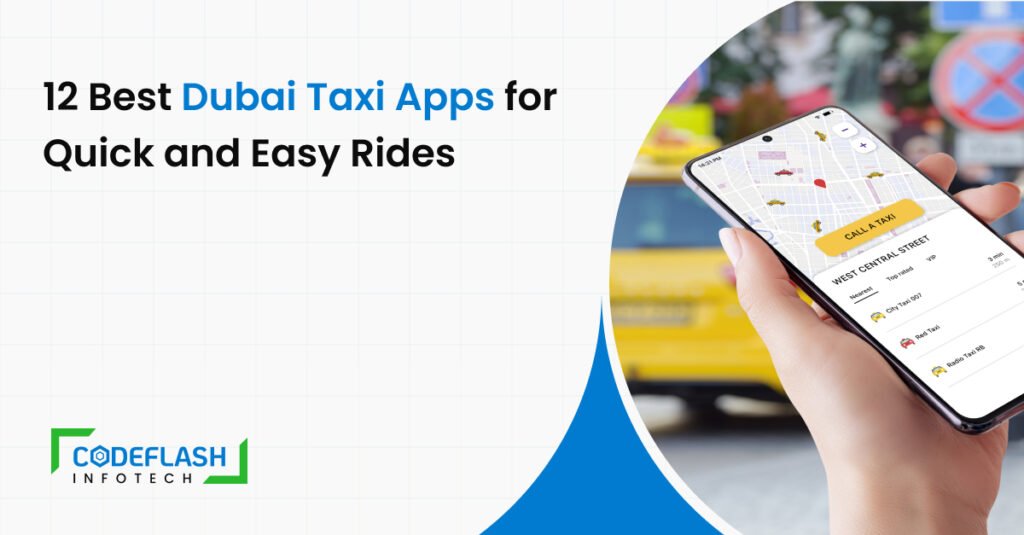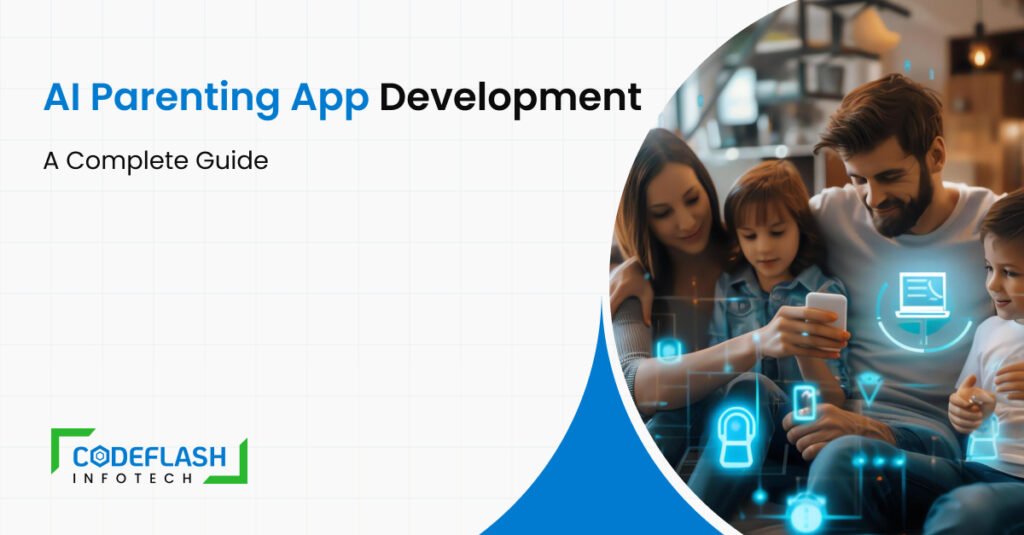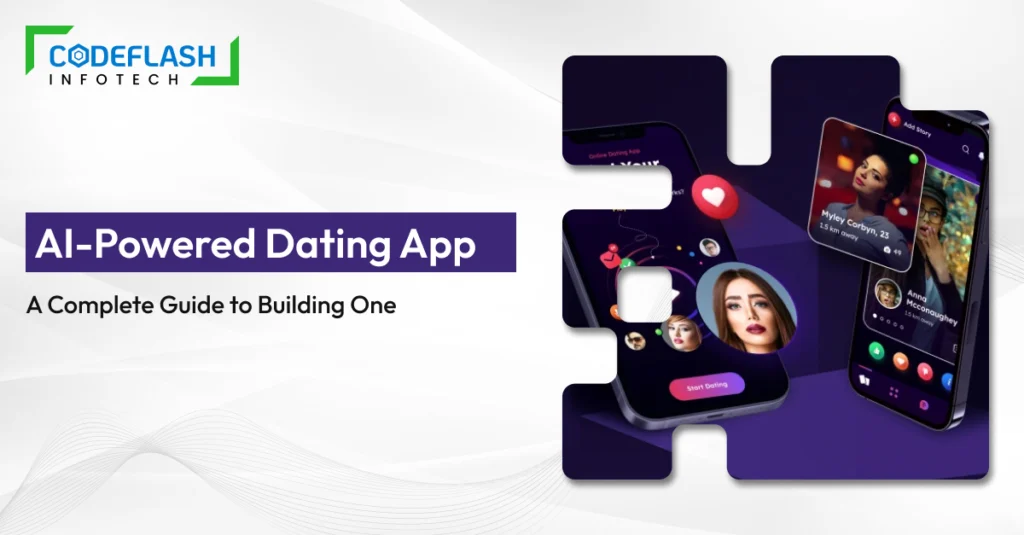
AI-Powered Dating App: A Complete Guide to Building One
15 August
By 2025, smart matching will be the main way to date, taking the place of swiping. As the world moves toward more personalized digital experiences, the AI dating app development is changing how people find partners who are a good fit for them.
These apps are evolving into smart platforms that utilize behavioral data, preferences, and even emotional cues to facilitate deeper and more meaningful connections between people. Companies that want to make dating apps that use AI are going after a market that values privacy, personalization, and prediction.
These apps are becoming digital relationship coaches, not just tools for finding a partner. They use generative AI to matchmake people up and suggest conversations in real time.
In this blog, we talked about how to build an AI-powered dating app in 2025, the cost to develop an AI-based dating app, the business model for AI-and-dating apps, and what AI-driven dating apps are like.
Do you want to know what AI-powered dating apps will look like in 2025?
By 2030, the online dating market is expected to be worth $13.4 billion, and AI will power some of the most creative and innovative solutions.
Statista reports a rapid growth in user demand for more complex algorithms and enhanced personalization.
AI isn’t just a fad; it’s becoming the most important part of dating sites that work. From reducing ghosting rates to improving match relevance, AI integration in dating apps is delivering measurable results in user retention, satisfaction, and subscription revenue.
Dating apps like Tinder, Bumble, and Hinge already use AI to help people find partners who are a good fit for them. Also, new businesses are using computer vision and natural language processing (NLP) to match people in ways that go beyond just matching them on the surface. New business owners who launch in 2025 have some exciting opportunities thanks to this process.
In what ways can AI be incorporated into dating app development?
- Algorithms for AI-Powered Matchmaking
AI matchmaking uses more than just regular filters. It uses behavioral data, swipe patterns, shared interests, conversation quality, and even how the user feels. Every time these models interact with someone, they learn more and get better at matching. This plan makes it much more likely that people will stay with the company for a long time and do well in their matches.
- Chat helps computers understand human language.
AI-powered NLP engines and chatbots help people start and keep conversations that matter. Tone analysis, smart nudges, and suggested replies are some of the features that make the user experience better, especially for people who have trouble talking to others. These systems also help stop ghosting by keeping conversations going in a way that is stimulating and timely.
- Improving profiles with generative AI
Users often have trouble choosing captivating pictures or writing bios. By analyzing facial expressions in uploaded photos and rewriting bios to make them more engaging, generative AI tools improve users’ first impressions. Additionally, and even proposing new profile descriptions, generative AI tools can recommend the most sincere and amiable options. This process enhances first impressions and increases the likelihood of matches.
- Real-Time Recommendation Systems
Dating apps utilize a real-time recommendation system in dating apps to dynamically alter the user feed. These systems change which profiles show up next based on swipes, how people act in the app, their preferences, and how they interact with each other.
People like the app more because it seems more planned and less random.
- Fake user profiles can be identified and eliminated by AI.
AI can quickly find and get rid of profiles or bots that look suspicious by looking at things like metadata, language use, image authenticity, and strange patterns of activity. In the cutthroat dating app market of 2025, it can also look for offensive content in messages or pictures, which helps keep the space safe and polite.
- Watching something and seeing unacceptable behavior
AI can quickly look through messages for inappropriate language, harassment, or other strange behavior. If someone keeps being rude, the system might automatically limit their access or send them warnings. This tool for moderating in real time is a game changer for protecting the brand and keeping customers safe.
- Very personalized match suggestions
AI can use lifestyle factors like what you like to eat, how you like to exercise, your political views, or your entertainment preferences to make niche matches. These micro-matching models can help apps that are aimed at specific groups of people, like vegans, travelers, or LGBTQ+ communities.
- Making smart plans and setting dates.
Some AI apps use calendars and location services to figure out when and where people are most likely to be available for meetings. AI can even suggest follow-up messages after a date and come up with first date ideas based on what you both like, which makes it easier to date both online and in person.

Benefits of Creating a Dating App with AI
- More accurate matches
AI is better at matching people because it learns their likes, feelings, and actions. AI makes better compatibility suggestions and makes users happier with every interaction, unlike static filters.
- Experiences that are unique to you
Because of carefully chosen matches, tone-based chat suggestions, interest-based date ideas, and AI-powered conversation starters, each user has a different experience. These very personal touches make people more likely to use the app and stay loyal to it.
- A place that is safer and more dependable
AI tools can help you find bots in real time, report suspicious behavior, and get rid of content that isn’t appropriate. This keeps users safe and helps app developers save money on moderation and promote their brand.
- An increasing number of people want to make purchases and remain engaged.
AI keeps people interested by giving them interactive features like smart push notifications, AI match recaps, and recommendations based on their feelings. This makes more people who use the app pay for it and stay on it longer.
- Ideas that can grow. The process is driven by information.
AI gives you a lot of information about how users act, like what works, what doesn’t, and when they are most interested. These tips help businesses grow over time by making money, improving the user experience, and getting better at marketing.
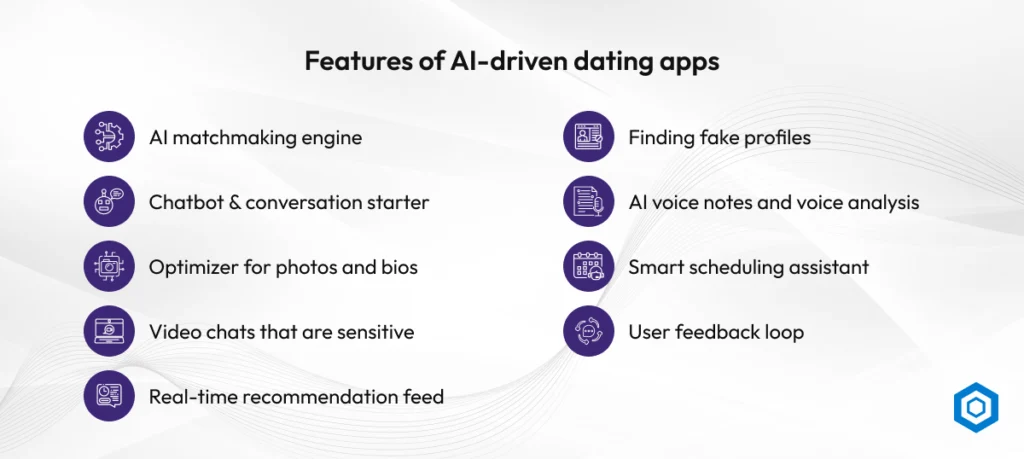
Features of AI-driven dating apps
AI is redefining modern dating by making apps more personalized, intuitive, and emotionally intelligent. Below are the top features of AI-driven dating apps that are driving smarter matches and better user experiences in 2025.
- AI Matchmaking Engine
To recommend highly compatible matches, the AI matchmaking system looks at user behavior, interests, and social activity. It gets smarter with every swipe, message, or profile view.
- Chatbot & Conversation Starter Suggestions
NLP-driven chatbots offer personalized icebreakers and response ideas based on your match’s profile and chat history. This reduces awkward pauses and helps users build engaging conversations.
- Optimizer for Photos and Bios
Generative AI tools can suggest changes to bios and profile pictures that make them more appealing to users. It changes your lighting, updates your frames, and even changes your bio to fit with what people are doing right now. A polished and honest profile is meant to attract better matches.
- Video chats that are sensitive
AI-powered video chats detect facial expressions, tone, and micro-reactions to assess real-time emotional responses. This helps users gauge mutual interest and comfort levels during video dates. It adds emotional depth to virtual interactions for better match evaluation.
- Real-Time Recommendation Feed
The app continuously updates the feed based on user activity, preferences, and engagement patterns. It shows the most relevant profiles by learning what types of users you interact with most. This keeps the experience dynamic and personalized every time you open the app.
- Finding Fake Profiles
Machine learning looks for signs of fake user profiles by analyzing content and tracking behavior. It flags automated responses, duplicate images, or scripted bios to keep users’ trust. This feature makes the dating environment safer and more real for everyone.
- AI Voice Notes and Voice Analysis
You can see how clear, emotional, and personable users’ voice messages are. AI makes match suggestions better by finding patterns in the pitch and energy of voices. It makes dating better by making people more emotionally compatible.
- Smart Scheduling Assistant
The assistant uses AI to look at users’ calendars and routines and suggest the best times and places for meetings. It reduces the amount of back-and-forth planning that occurs frequently in online dating. It’s easier to plan dates now, and you can be spontaneous without worrying.
- User feedback loop
After each date or interaction, the app asks users to give short feedback on how it went. AI then uses this information to find patterns of compatibility and make future matches better. The system gets better at matching user intent and becomes more accurate over time.
Read More: Discover how intelligent UI can enhance user experience in our blog on Role of Artificial Intelligence in UI/UX Design.
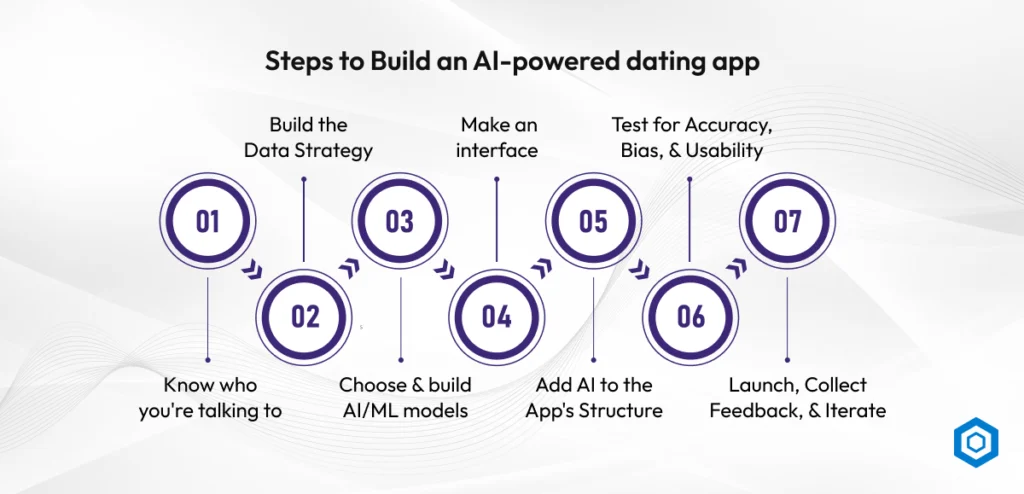
Steps to Build an AI-powered dating app
Creating intelligent dating sites requires more than just a visually appealing user interface; it also requires intelligent technology that can recognize human behavior. This article explains how to build an AI-powered dating app in 2025 that uses AI, machine learning, natural language processing, and user-centered design to successfully connect people.
Step 1: Know who you’re talking to.
First, you must determine the purpose and context of your AI-powered dating app. Are you trying to connect with a broad audience or a particular demographic, such as travelers, professionals, or members of a particular community? Before beginning work on the app, please ensure you understand what makes it unique, the AI features it will include, and the intended audience.
Step 2: Build the Data Strategy
Next, determine what kind of data your app will need to deliver smart matchmaking. This includes behavioral data, swiping patterns, profile preferences, communication habits, and possibly voice or facial inputs. To train AI models that are accurate and ethical, you need to collect a wide range of data that is free of prejudice.
Step 3: Choose and build AI/ML models.
You need to choose the right AI frameworks, such as TensorFlow or PyTorch, and rely on custom AI/ML development services to build personalized features you require, including matching people, moderating content, and detecting emotions. The models learn about how users behave, interact with, and engage with your app by training on real-world data. This is the data that makes your app smart.
Step 4: Make an interface
Now that the AI logic is in place, focus on making the user experience as smooth as possible. Design should include both beauty and intelligence. AI tools like Biotips and suggested responses should help users without being too pushy. AI can learn what users want faster when onboarding flows are clear.
Step 5: Add AI to the App’s Structure
Now, developers integrate trained AI models into the app’s features with reliable full-stack development services, such as chatbots, profile optimization, matching logic, and recommendations. Using tools like TensorFlow Lite or Core ML makes sure that iOS and Android devices both run smoothly with very little lag.
Step 6: Test for Accuracy, Bias, and Usability
Testing is critical to catch bugs, algorithmic bias, or UX flaws. To observe how the AI reacts, create various user personas and behavioral patterns. Run A/B tests to optimize engagement features and ensure moderation tools catch inappropriate content accurately and fairly.
Step 7: Launch, Collect Feedback, and Iterate
After testing, launch a beta version or MVP to gather early user feedback. Use this input to make your AI models better and add more features. Plan for regular updates, retraining, and feature expansion since user data will help evolve your app into a more intelligent, personalized platform over time.
Cost to develop an AI-based dating app.
Depending on the features of AI-driven dating apps they have and how complicated they are, AI dating applications may cost anywhere from $40,000 to $250,000 or more. This depends on how complex the features are, how many platforms it works on (iOS, Android, or web), and how deeply the AI is integrated.
It could cost between $40,000 and $70,000 to make a simple app that helps people find matches and suggests profiles. A mid-range solution with chatbots, real-time recommendations, and image moderation could cost between $80,000 and $150,000.
Advanced dating apps that use generative AI for matchmaking, emotion recognition, multilingual NLP chat support, and video-based interaction modules could cost up to $200,000 to make if they have scalable infrastructure and security protocols.
Costs after launch, such as marketing, retraining AI, and adding new features, also impact the total investment. When you hire a team that specializes in Dating app development using AI, you can be sure that you will get better cost optimization and a faster time to market.
For a tailored quote, contact our mobile app experts today.
AI and dating app business model
As AI becomes the main factor in user experience, dating app monetization methods are changing quickly. The business models for dating apps, along with the AI technologies that support them, ensure profitability while leveraging AI’s capability to create highly personalized products for each user.
- Freemium feature unlocks with AI
This model is still the most popular. It lets people use basic features but hides premium AI tools like chat prompts, personality-based match scoring, and emotion-based match filters behind paywalls. The more personalized the experience is, the more likely it is that an upgrade will happen.
- AI Add-Ons with Different Levels of Subscription
There are now many different subscription levels for apps, and each one gives you access to different AI-powered features. Basic plans have fewer predictive tools, but a “Gold” tier may include unlimited smart matches, AI bio optimization, and read receipts in real time.
- Pay-Per-Feature & Microtransactions
Individual purchases of AI tools are an alternative to long-term subscriptions. For example, spend $1 to view your behavior-based compatibility report with a match or $2 to have a generative AI assistant rewrite your dating bio.
- Sponsored Matches Powered by AI
Based on user personas, interests, and emotional profiles, brands or services can sponsor matches. This creates a new layer of native advertising where companies use the AI logic in your app to precisely target users.
- AI API or SaaS licensing model
The AI engine itself could help businesses that want to grow and make money. By licensing the AI and dating app business model as a SaaS platform to other niche dating apps or communities, businesses can make steady B2B income.
Conclusion
Making AI dating apps is now a business-critical innovation in the digital dating world of 2025, not just a cool idea for the future. AI helps businesses keep customers, get them to spend more money, and make more money by using machine learning, natural language processing, and real-time personalization.
Whether you are launching a new platform or enhancing an existing app, investing in dating app development using AI gives you a competitive edge in an experience-driven market.
From intelligent matchmaking to fraud detection and conversation guidance, building an AI-powered dating app isn’t just about tech; it’s about modifying how people find love. If you’re ready to lead the next big thing in dating, now is the time to start.
Frequently Asked Questions
First, please figure out what your app’s goals are and who it is meant for. Then, gather data, train AI models to moderate and match users, build a simple user interface, add AI features, and release the app in stages.
A dating app with AI should have a matchmaking engine, a photo and bio optimizer, chat features that can read emotions, the ability to spot fake profiles, smart scheduling, and personalized push notifications.
The size of the app, the number of platforms it operates on, the presence of AI, and post-launch support all influence its price. The price could be anywhere from $40,000 to $250,000 or more, depending on the details.
Yes, generative AI for matchmaking makes people more compatible by rewriting bios, learning about their subtle preferences, and making communication clearer and more pleasant.
Table of Content
Do you want to know what AI-powered dating apps will look like in 2025?
In what ways can AI be incorporated into dating app development?
Benefits of Creating a Dating App with AI
Features of AI-driven dating apps
Steps to Build an AI-powered dating app
Cost to develop an AI-based dating app.



